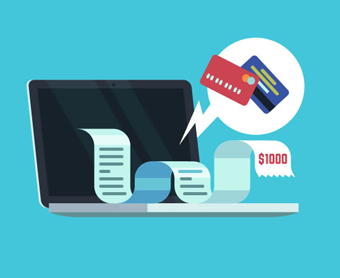December 3, 2020
Categories: Credit & Debit
Why Transferring Balances to a New Card May Be a Good Idea

What does it mean to carry a balance?
Having a credit card lets you borrow money from the card issuer for purchases. The amount of money you charge during one billing cycle (usually a month) is really a loan. The total amount you owe is the balance, and if you don’t pay it in full when it’s due, it is “carried” to the next billing cycle, plus interest charges.
What’s so bad about carrying a balance?
- It can cost you serious money.
Let’s say you use a 15% APR credit card to purchase a lawnmower that’s on sale for $100, reduced from $200. That’s 50% off. Great deal, right? Maybe not. If you don’t pay your credit card bill, that $100 balance will incur interest which not only gets added to the balance, but is compounded. So, the longer the balance remains unpaid, the more money you’ll owe. If you leave that $100 balance on the 15% APR credit card for five years, for example, the lawnmower will have cost you roughly $210. - It can make it more difficult to get a loan.
Carrying a balance on your credit card can adversely affect your credit score, an important factor to lenders who want to see that you’ll pay their loans in a timely manner. People with high/excellent credit scores are usually eligible for more favorable rates on loans such as auto loans or mortgages. Those with low scores are more likely to pay higher interest rates on loans, or have applications rejected altogether.
How can transferring balances help me?
Transferring credit card balances to a lower-rate card will most likely help you pay off those balances more quickly, which will save you money and repair that faltering credit score. With the low-rate card, you won’t be charged as much interest, so each payment you make negates a bigger chunk of the balance. Tip: When you transfer balances, make a plan to pay a certain amount toward the balance each month, and apply the interest you’re saving to each payment.
Watch the fine print.
Many times, financial institutions will offer a low introductory credit card rate; in a specified amount of time, the rate generally changes to a higher one. Sometimes, this new rate can be quite high, even higher than the rate on your original card. 0% APR may sound great, but not if the rate shoots up to 20% after 6 months and you expect to still be carrying a hefty balance. Look for a rate that won’t skyrocket after the introductory period, and try to pay down balances as much as you can before the rate changes. The idea here is to pay off the balances, not to give yourself a temporary reprieve before a high rate puts you back in a heap of debt.
Is transferring balances for you? Check our balance transfer calculator to find out!
This post first appeared in The Summit Blog in November, 2019.
The Summit FCU is federally insured by the NCUA. Membership eligibility required. Subject to credit approval. Must be 18 years of age or older to apply.
Cynthia Kolko, The Summit Federal Credit Union
